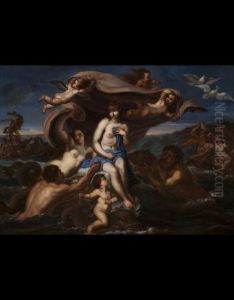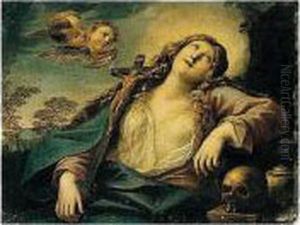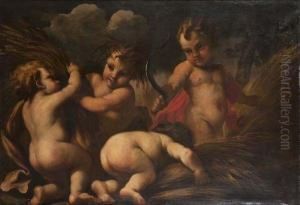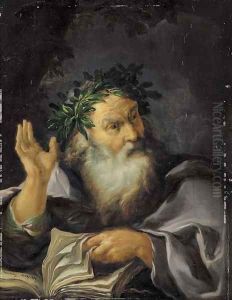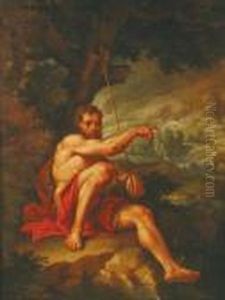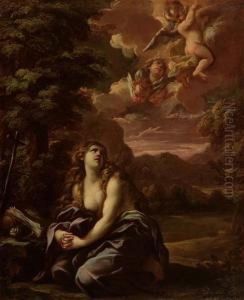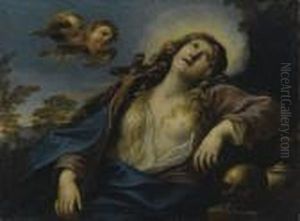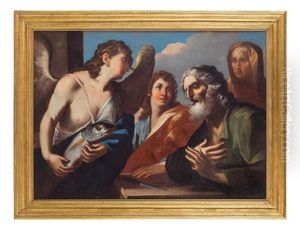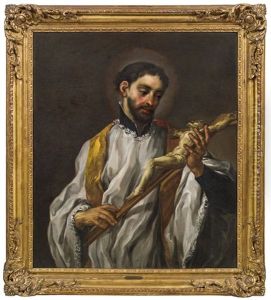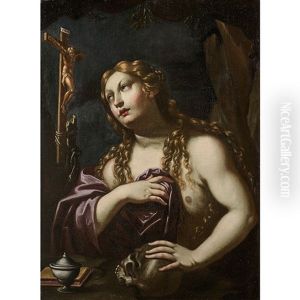Girolamo Troppa Paintings
Girolamo Troppa was an Italian painter of the Baroque period, active mainly in his native region of Marche and Rome during the late 17th century and early 18th century. Born around 1630, Troppa’s artistic journey began under the influence of the vibrant cultural and artistic atmosphere of Italy during that time, which was characterized by dramatic expression and a grandeur that was typical of the Baroque movement.
Troppa was initially trained by the painter Guillaume Courtois (known as Guglielmo Cortese), who was also known as Il Borgognone. This training provided him with a foundation in the techniques and styles that were prevalent in Rome, which was then the heart of the artistic innovation in Italy.
Throughout his career, Troppa developed a distinctive style that incorporated the dynamic compositions and strong contrast of light and shadow known as chiaroscuro, which were hallmarks of the Baroque style. His works often depicted religious and mythological subjects, filled with emotional intensity and dramatic effects.
One of the notable aspects of Troppa’s work is his ability to convey movement and drama. This is evident in one of his masterpieces, 'The Martyrdom of St. Sebastian', which showcases his skill in creating a powerful narrative through the depiction of physical and emotional tension.
Despite his talent, Girolamo Troppa did not achieve the same level of fame as some of his contemporaries, such as Bernini or Caravaggio. Nevertheless, his contributions to the Baroque period have been recognized by art historians, and his paintings are considered significant examples of the style.
Troppa's works can be found in various churches and collections throughout Italy, where they continue to be studied and appreciated for their artistic merit. Girolamo Troppa passed away in 1710, leaving behind a legacy as a skilled painter who captured the essence of the Baroque period in his dynamic and expressive works.


